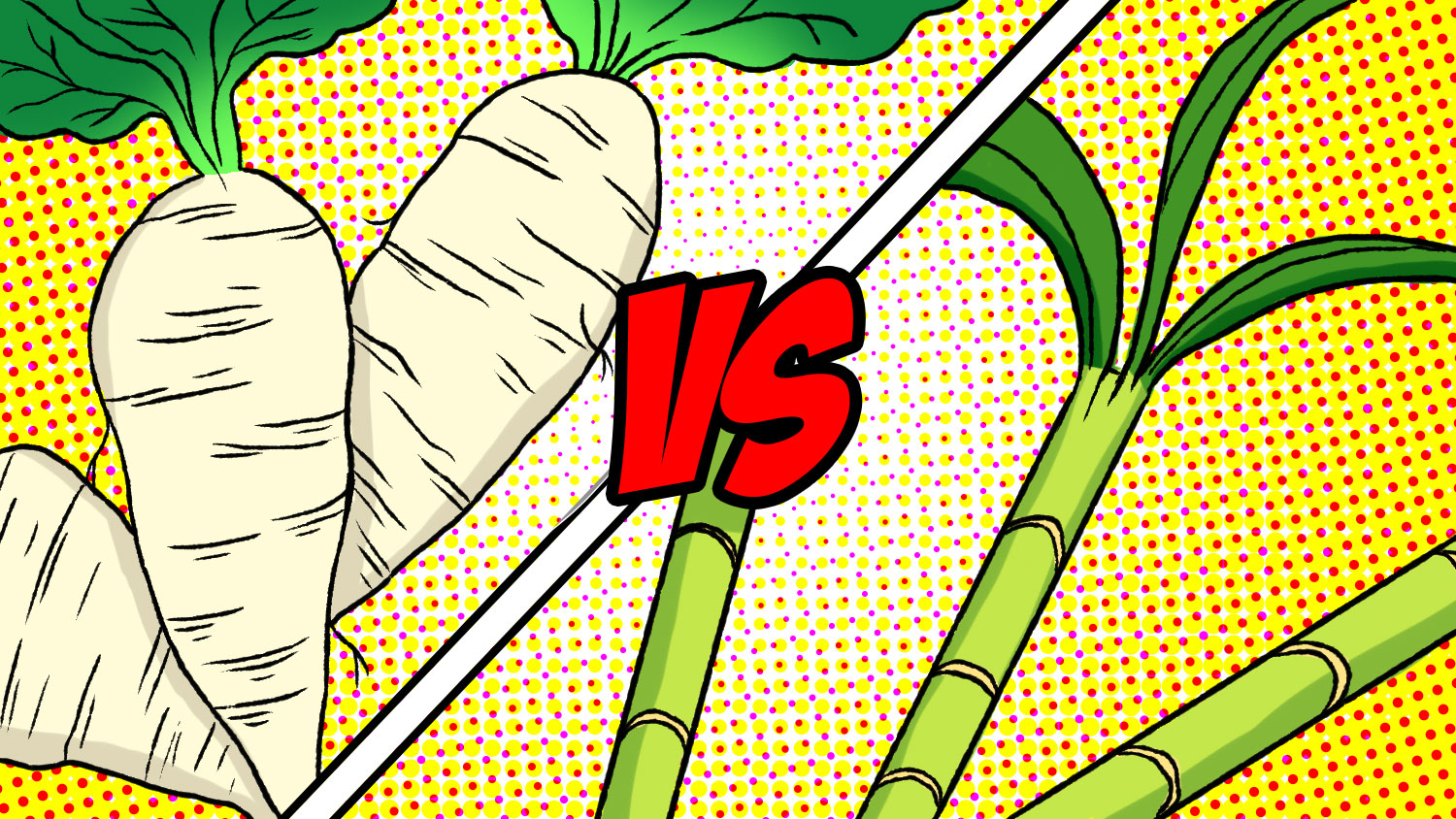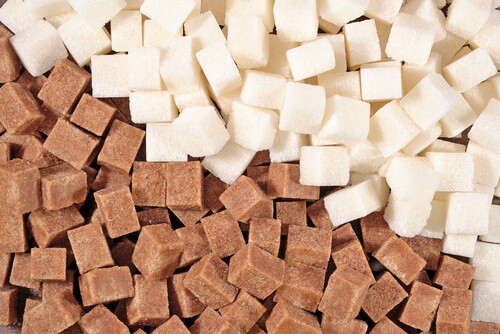Comprehending Sugar Beet Vs Sugar Cane: Secret Differences and Their Value in the International Sugar Market
The distinctions in between sugar beet and sugar cane are considerable in the context of the global sugar market. Their differing weather needs affect where they can be grown, while their distinct dietary profiles affect consumer preferences. Additionally, the financial ramifications of each crop form market dynamics. Understanding these differences is vital for realizing the more comprehensive influence on production and supply chains. What more intricacies arise when considering their functions in the industry?
Climate and Geographic Flexibility
Sugar beet and sugar cane exhibit unique environment and geographic adaptability that influences their cultivation. Sugar beet grows in warm environments, requiring cool weather condition for perfect development. It is primarily expanded in regions such as Europe and The United States And Canada, where problems favor its growth during spring and loss. In contrast, sugar cane embellishments in exotic and subtropical climates, requiring warm temperature levels and plentiful rainfall. This plant is chiefly grown in nations like Brazil, India, and Australia, where the setting sustains its long growth cycle.The differing versatility of these plants affects not just their geographical circulation yet also the farming practices utilized by farmers. Sugar beet's resilience to chillier temperatures enables earlier growing, while sugar cane relies upon a much longer growing season to attain optimal yield. Recognizing these climatic choices is important for improving manufacturing and making sure food security in areas depending on these vital sugar resources.
Cultivation and Collecting Methods

Cultivating sugar beet and sugar cane involves unique strategies customized to each crop's certain development requirements. Sugar beet is usually planted in trendy, warm environments, requiring well-drained dirt and accurate spacing to enable suitable origin development. Sugar beet vs sugar cane. Farmers usually use mechanical planters to guarantee consistent seed placement, adhered to by routine watering and weed management methods to sustain growth.In comparison, sugar cane thrives in warmer climates and is generally circulated with stem cuttings instead of seeds. Growing occurs in rows, enabling for ample sunshine and air movement. Harvesting sugar cane is labor-intensive, frequently involving manual cutting or the use of specialized machinery, relying on the range of manufacturing. On the other hand, sugar beet harvesting utilizes mechanical farmers that extract the origins from the dirt, lessening damage and guaranteeing a cleaner product. Both plants require mindful administration to take full advantage of return and quality, reflecting their importance in the international sugar sector
Handling Approaches and Efficiency
Handling approaches for sugar beet and sugar cane disclose key distinctions that influence effectiveness and yield. Sugar beets undergo a series of steps, beginning with cutting the origin right into thin cossettes, complied with by removal of juice with diffusion or pressing. This juice is then detoxified, concentrated, and taken shape, leading to granulated sugar. The process commonly takes concerning 5-10 hours from collecting to crystallization.In contrast, sugar cane handling includes squashing the stalks to remove juice, which is then heated up and clarified. The juice undertakes dissipation and condensation, typically taking much longer than beet handling as a result of the navigate to this website fibrous nature of the cane. Additionally, sugar cane can be processed continually, boosting efficiency.
Economic Influence and Worldwide Production Patterns
The differences in handling techniques in between sugar beet and sugar recommended you read cane not only influence performance but likewise have substantial economic ramifications. Sugar cane controls in exotic regions, supplying reduced manufacturing expenses due to favorable climatic problems and reduced power needs. On the other hand, sugar beet is largely cultivated in warm zones, where higher manufacturing costs are usually sustained. This geographical variation impacts worldwide supply chains, influencing prices frameworks and availability.Recent fads show a rising and fall international need for sugar, with both crops experiencing rate volatility. As countries go for self-sufficiency, financial investments in neighborhood sugar beet manufacturing have actually raised, specifically in Europe and North America. On the other hand, developing nations remain to count heavily on sugar cane, driven by export possibility. On the whole, the economic effect of these plants is profound, forming farming policies, trade contracts, and the sustainability of the international sugar industry.
Nutritional Profiles and Health Considerations
While both sugar beet and sugar cane function as main resources of sucrose, their nutritional accounts and wellness considerations differ substantially. Sugar cane, often perceived as an extra natural sweetener, contains trace quantities of minerals and vitamins, consisting of calcium and potassium, in addition to antioxidants. On the other hand, sugar beet is mostly composed of sucrose with minimal nutritional value, however it is rich in fiber and particular phytonutrients, which may provide gastrointestinal benefits.Health factors to consider bordering both resources concentrate on their high glycemic index and prospective effects for obesity and diabetes. While both sorts of from this source sugar contribute to calorie intake, the handling methods can influence their health impact. Sugar beet usually goes through considerable refining, while sugar cane may preserve even more of its all-natural substances in much less processed forms, such as raw cane sugar. Ultimately, moderation is vital when including either right into a well balanced diet.
Frequently Asked Concerns

Which Areas Largely Grow Sugar Beet Versus Sugar Cane?
Areas mostly growing sugar beet consist of Europe and North America, while sugar cane prospers in exotic and subtropical locations such as Brazil, India, and Southeast Asia. Climate and dirt conditions substantially affect these agricultural patterns.
How Do Sugar Beet and Sugar Cane Differ in Preference?

What Prevail By-Products of Sugar Beet and Sugar Cane?
Usual spin-offs of sugar beet include molasses and animal feed, while sugar cane returns bagasse, molasses, and ethanol. Both plants contribute considerably to various sectors, boosting sustainability and economic worth past their primary sugar manufacturing.
Exactly How Do Ecological Variables Impact Sugar Beet and Sugar Cane Returns?

What Is the Historical Relevance of Sugar Beet and Sugar Cane Farming?
The historic relevance of sugar beet and sugar cane cultivation lies in their roles in worldwide economic climates, agricultural practices, and trade. Both plants formed social frameworks, influenced early american plans, and added to the development of contemporary sectors.
Comments on “Health debate: Sugar beet vs sugar cane—is one better?”